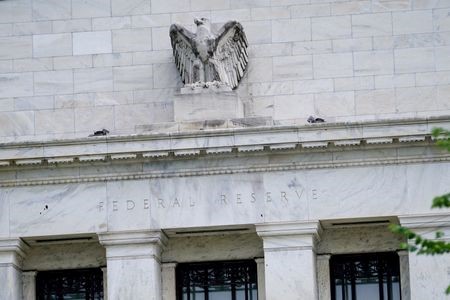




Philippines Trade Update: Growing exports lead to stronger trade balance
 DOWNLOAD
DOWNLOAD

Policy Rate Views: Fed’s cautious step towards neutral
 DOWNLOAD
DOWNLOAD

Policy Rate Updates: Closer to BSP’s Goldilocks moment
 DOWNLOAD
DOWNLOAD


US yields mixed after bond rally as first rate cut size uncertain

NEW YORK – US Treasury yields were mixed on Monday, with some profit-taking after last week’s bond rally driven by a weakening labor market that has left the market wondering how much the Federal Reserve will cut interest rates this month.
Treasury yields, which move inversely to prices, touched a more than one-year low on Friday after data showing US employers added far fewer workers than expected in August and July. This cemented prospects that the US central bank will start cutting rates at its Sept. 17-18 meeting.
Those gains were partly reversed on Monday, as short-dated yields inched higher.
“The reality set in that the market moved a little too much to lower yields on Friday and so there was a decent window to sell paper at richer levels,” said Tom di Galoma, head of fixed income trading at Curvature Securities.
Investors were also selling ahead of this week’s Treasury auctions of three-, 10- and 30-year paper, as well as on expectations of heavy corporate debt supply as issuers try to take advantage of lower yields, he added.
Rates traders on Monday were assigning a 71% chance of a 25 basis point interest rate cut by the Fed next week, and a 29% probability of a 50 basis point cut, CME Group data showed.
Uncertainty over the magnitude of the first rate cut could cause some volatility in Treasuries for the rest of the week, with investors looking at consumer price data on Wednesday for more clarity over the pace of disinflation in the economy.
A report released by the New York Federal Reserve on Monday showed the US public’s outlook for inflationary pressures was little changed last month as price pressures continued to retreat.
“There’s a lot of consensus that the Fed is going to cut substantially,” said Campe Goodman, a fixed-income portfolio manager at Wellington Management. “I think the debate is less about how much and more about whether they are going to do it sooner or later.”
The US presidential debate between Democratic candidate Kamala Harris and Republican candidate Donald Trump on Tuesday could also cause some price fluctuations in the bond market, investors said.
Benchmark 10-year Treasury yields edged down to 3.699%, while two-year yields crept higher to 3.669%.
The closely watched part of the Treasury yield curve comparing two- and 10-year yields stood at about three basis points, flatter than on Friday, when the spread of 10-year over two-year yields was the largest since July 2022.
(Reporting by Davide Barbuscia; Editing by Andrea Ricci and Richard Chang)
This article originally appeared on reuters.com





 By Reuters
By Reuters